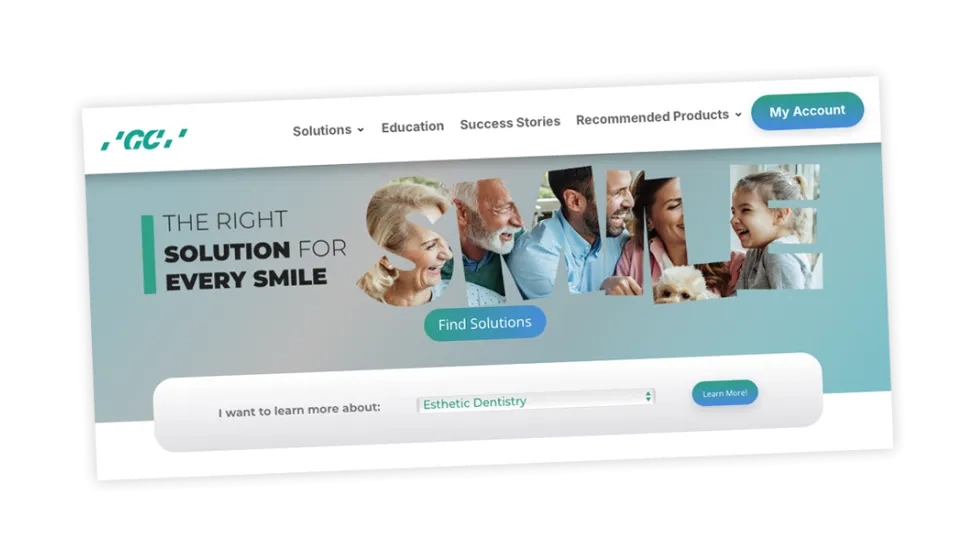Understanding Anterior Restorations: Meeting Patient’s High Expectations and Exploring Treatment Options
07/14/2023
Anterior restorations refer to dental treatments or procedures performed on the front teeth, specifically on incisors and canines. These restorations are aimed at improving the appearance, function, and health of the front teeth.
Common Reasons for Anterior Restorations
There are several reasons why someone might require anterior restorations:
-
Tooth decay: If the front teeth have cavities or decay, they may need to be restored to prevent further damage and to restore the tooth's structure and aesthetics.
-
Chipped or fractured teeth: Accidents or injuries can cause chips or fractures in the front teeth. Anterior restorations can be performed to repair the damaged teeth and restore their natural appearance.
-
Discolored or stained teeth: Teeth can become discolored or stained due to various reasons, including aging, smoking, or certain medications. Anterior restorations can improve the teeth's color and achieve a brighter, more youthful smile.
-
Malformed or misshapen teeth: Some people may have naturally misshapen or malformed front teeth, which can affect their smile and overall dental aesthetics. Anterior restorations can help reshape and contour the teeth to achieve a more harmonious appearance.
Classifications of Anterior Cavities
Based on the anatomical location on the tooth, anterior cavities can be classified on:
-
Class III: affecting proximal surfaces on central and lateral incisors without affecting the incisal angles;
-
Class IV: affecting proximal surfaces including incisal angles of anterior teeth.
Direct and Indirect Techniques for Anterior Restorations: Material Selection and Considerations
Anterior restoration can be a demanding procedure. As these restorations are in the aesthetic zone, patient's expectations are usually very high. Depending on the individual case and the dentist's recommendation, specific treatment options for anterior restorations may vary.
Direct Restorations for Anterior Teeth
To restore area of minor damage or decay, direct restorations can be done in a single appointment. This type of restoration can be entirely fabricated inside the mouth without the need of a dental laboratory. Usually, it can be completed in a single appointment and do not need a provisional restoration. In most of the cases, direct restorations are made from resin composite, a tooth-colored aesthetic material.
Resin composites are very popular materials due to its high aesthetic, very good prognosis and reasonable costs. In anterior teeth, resin composite restorations are considered the most conservative and least invasive technique to return missing and diseased tooth structure and to enhance color, form and function. However, for composite restorations to mimic natural tooth structure, the clinician must have a deep knowledge on tooth anatomy as well as a comprehensive understanding of material science and techniques involved in direct restorative procedures.
Indirect Restorations for Anterior Teeth
In complex clinical cases, restorations cannot be performed inside the mouth. Instead, an indirect restoration must be fabricated outside the mouth before being placed on the affected tooth.
Some examples of indirect anterior restorations are crowns, bridges and veneers. These types of restoration are used to treat more severe cases and can be fabricated in a dental lab or in an in-office milling machine. In cases where a dental lab is used, there are usually two dental appointments required to place an indirect restoration.
Dental ceramics are a common material of choice for anterior indirect restorations. They are widely used in dentistry due to their ability to mimic the optical characteristics of enamel and dentine, as well as their biocompatibility and durability.
Key Principles and Longevity Considerations for Anterior Restorations
To provide patients with a desirable result when planning anterior restorations, dentist must understand several key principles. These include the following:
-
The macro- and micro-anatomical variations that exist in the anterior dentition, including morphological variations of the whole tooth when viewed in differing planes, as well as surface textural changes and variations in the anatomy of the incisal edge.
-
The fluctuations that exist in shade and color between different patients as well as in different regions of a tooth for the same patient.
-
The effects of ageing on the properties of the enamel and dentine as well as aesthetic issues it may cause.
-
A good knowledge on available materials as well as their respective techniques of handling and application.
-
The fundamentals of adhesion and clinical occlusion.
To ensure longevity of anterior restorations, some factors must be considered:
-
Maintain a good oral hygiene;
-
Avoid excessive forces: habits such as biting on hard objects, opening packages with the teeth, bruxism can put excessive force on anterior teeth and potentially cause fracture or dislodgement of restorations.
-
Avoid stain-causing substances like coffee, tea, red wine, tobacco.
-
Regular visits to the dentist.
Anterior restorations may be a challenging treatment as it can involve a lot of expectation from the patients and needs high skills from the dentist. To provide ideal treatment and satisfaction to patients, dentist must assure the patient is given all information about the risks and benefits of all treatment options before treatment starts.
Achieve Optimal Results with GC America's Advanced Product Line
Take your anterior restorations to the next level with GC America's exceptional range of products. From the reliable G2-BOND Universal for optimal bonding to the exquisite aesthetics of G-aenial A’chord, and the precision of the Initial LiSi Block, we have the tools you need for outstanding results. Complete your restorations with confidence using the reliable and durable G-CEM ONE cement. Explore our extensive product line today and elevate your anterior restorations.

